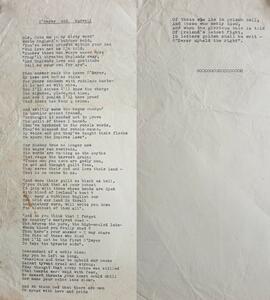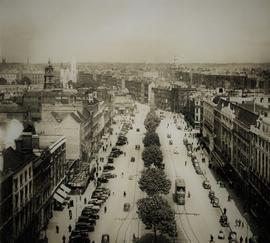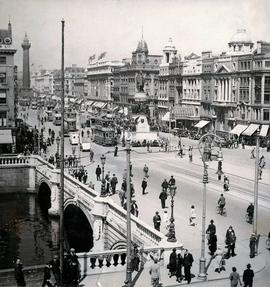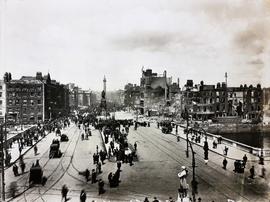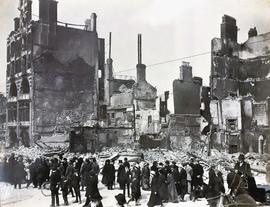A copy of a poem titled ‘O’Dwyer and Maxwell’ referring to the dispute between Edward Thomas O’Dwyer, Bishop of Limerick, and General Sir John Maxwell in the aftermath of the 1916 Rising.
A clipping of a report on the auction of an autographed letter of Daniel O’Connell (dated 17 September 1839) and a bundle of original correspondence of George Bernard Shaw. The article is taken from the ‘Irish Press’ (12 June 1956).
A view of O’Connell Street in Limerick in about 1940. The clock tower in the distance in the image stood atop Cannock’s Department Store. It was demolished after the store was taken over by Penneys (Primark) in 1980.
A view of Upper O’Connell Street in Dublin. The image was taken from atop Nelson’s Pillar.
A view of O’Connell Street, Dublin, in about 1930. One of the prominent buildings on Upper O’Connell Street is the Grand Central Cinema which opened its doors in 1921. It was badly damaged in a bomb attack in 1923, and finally destroyed when a fire broke out in 1946. The location is now occupied by a bank.
A view of Upper O’Connell Street, Dublin, at night in about 1930.
A photographic print of destroyed buildings on O’Connell Street after the 1916 Rising.
A photographic print of destroyed buildings on O’Connell Street after the 1916 Rising.
A photographic print of the destroyed General Post Office building on O’Connell Street after the 1916 Rising.
A photographic print of destroyed buildings on O’Connell Street after the 1916 Rising.
